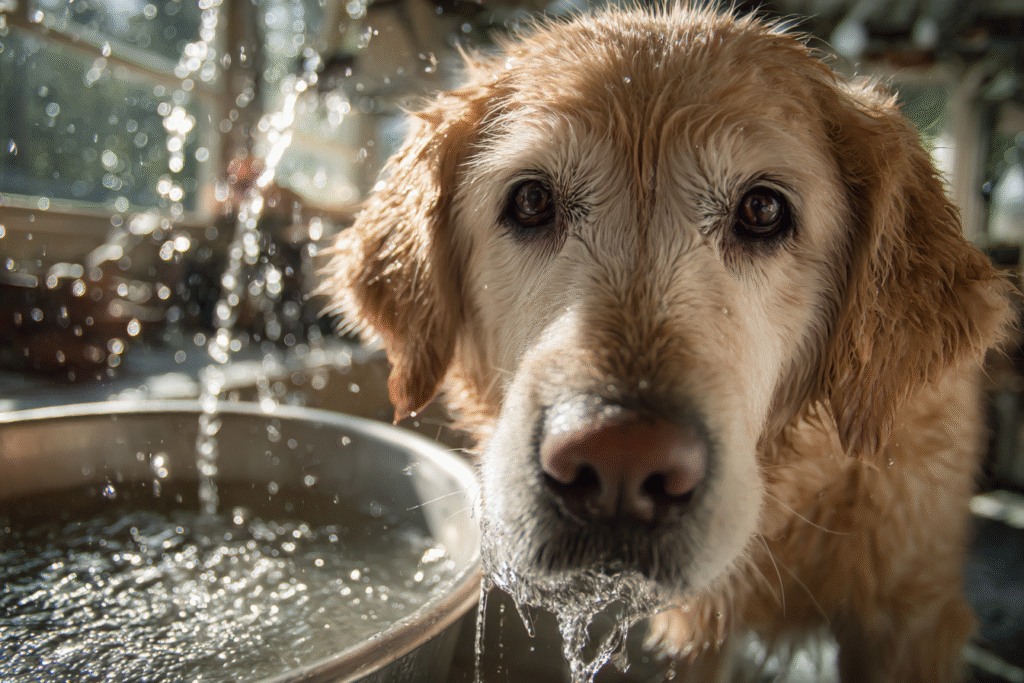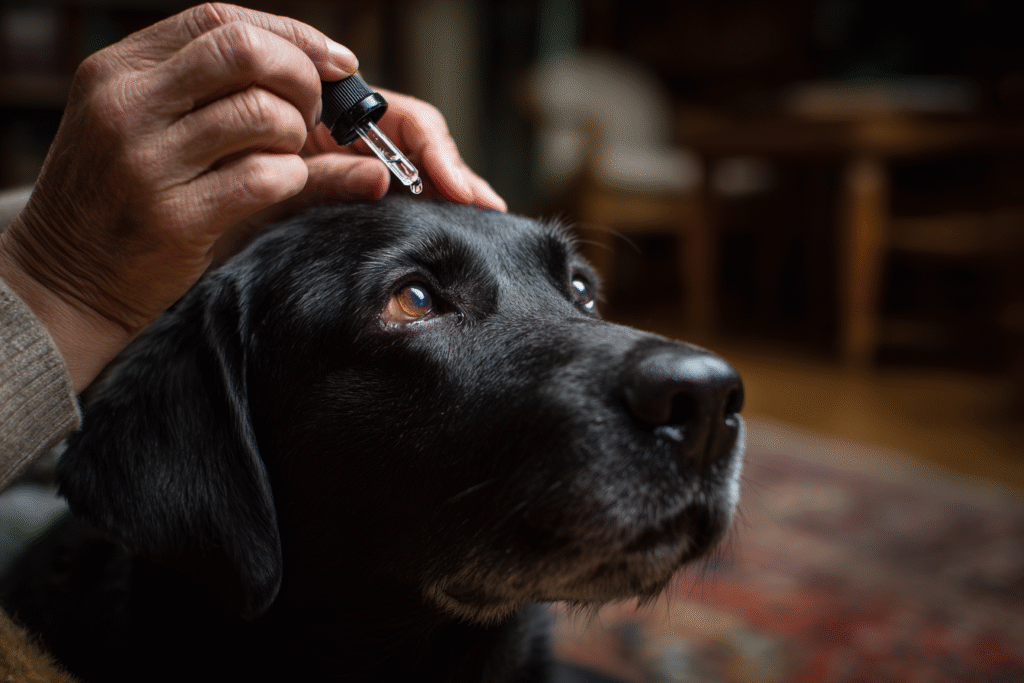Understanding Canine Insipidus: A Handbook for Dog Owners
Discovering your beloved pet has symptoms of insipidus in dogs can be deeply concerning, especially when you notice signs like polydipsia in dogs.
This condition, formally known as canine diabetes insipidus, is a rare disorder affecting water metabolism.
While the diagnosis of dog diabetes insipidus is uncommon, it’s crucial to understand its implications, particularly when considering diabetes insipidus in puppies.
This guide will walk you through everything you need to know, offering clarity and reassurance for concerned pet parents.
Table of Contents
- What is Insipidus in Dogs?
- Key Symptoms of Canine Diabetes Insipidus
- Understanding the Causes of Dog Diabetes Insipidus
- How Veterinarians Diagnose Insipidus in Dogs
- Exploring Natural and Supportive Care with Vitaplus (Vidatox)
- Treatment Pathways for Insipidus in Dogs
- Recovery and Long-Term Management
- Frequently Asked Questions
What is Insipidus in Dogs?
First and foremost, it is essential to understand that insipidus in dogs is not the same as the more common diabetes mellitus, which involves blood sugar regulation.
Instead, insipidus in dogs is a condition related to water balance in the body.
The disorder stems from issues with the antidiuretic hormone (ADH). ADH is produced in the brain’s hypothalamus and tells the kidneys how much water to conserve.
Consequently, if there is a problem with ADH production or the kidneys’ ability to respond to it, an excessive amount of water is lost through urine.
This triggers an intense, compensatory thirst, which is why polydipsia in dogs is a hallmark sign of the condition.
There are two primary forms of dog diabetes insipidus:
- Central Diabetes Insipidus (CDI): This form occurs when the brain fails to produce or secrete enough ADH.
- Nephrogenic Diabetes Insipidus (NDI): This type happens when the kidneys are unable to respond to ADH correctly, even when the hormone is present.
Both types of canine diabetes insipidus are exceptionally rare. Therefore, your veterinarian will first work to rule out more common diseases that present with similar symptoms.

Key Symptoms of Canine Diabetes Insipidus
The signs of insipidus in dogs are directly linked to the body’s inability to manage water levels. As a concerned owner,you are most likely to notice these two primary symptoms first.
The most prominent symptoms of canine diabetes insipidus include:
- Polydipsia (Excessive Thirst): An unquenchable thirst is a defining characteristic of polydipsia in dogs.
- Polyuria (Excessive Urination): Your dog may need to urinate much more frequently and in larger volumes.
- Incontinence: Due to the sheer volume of urine, house-trained dogs may start having accidents.
- Dehydration: Despite drinking a lot, your dog can become dehydrated if water intake doesn’t keep up with urine output.
- Weight Loss & Decreased Appetite: Some dogs may lose interest in food.
- Lethargy: Your pet may seem unusually tired or weak.
- Neurological Signs: In severe cases, especially those involving brain trauma or tumors, you might observe disorientation, seizures, or a lack of coordination.
Understanding the Causes of Dog Diabetes Insipidus
The origins of dog diabetes insipidus depend on whether the condition is central (brain-related) or nephrogenic (kidney-related). Understanding the cause is fundamental to determining the best course of action.
Causes of Central Diabetes Insipidus (CDI)
CDI, the more common of the two types, involves a disruption in ADH production or storage. This is typically seen in middle-aged or senior dogs.
Potential causes include:
- Idiopathic: In many cases of insipidus in dogs, the precise cause remains unknown.
- Head Trauma: A significant injury to the head from an accident or fall can damage the pituitary gland or hypothalamus.
- Brain Tumors: A growth that affects the specific brain regions responsible for ADH can trigger the condition.
- Congenital Defects: Very rarely, diabetes insipidus in puppies can be present from birth due to a developmental issue.
Causes of Nephrogenic Diabetes Insipidus (NDI)
NDI occurs when the kidneys fail to recognize and respond to ADH’s signals. It can be primary (hereditary) or secondary (acquired).
- Primary NDI: This is a congenital form where a puppy is born with defective ADH receptors in the kidneys. It is sometimes seen in certain breeds, making diabetes insipidus in puppies of breeds like Siberian Huskies a possibility, though still rare.
- Secondary NDI: This form is acquired later in life and is a complication of another underlying health issue.Causes include chronic kidney disease, Cushing’s disease, liver disease, high calcium levels, or certain medications.

How Veterinarians Diagnose Insipidus in Dogs
Because excessive thirst and urination are symptoms of many different diseases, diagnosing insipidus in dogs is a process of elimination.
Your veterinarian will start with a thorough physical exam and a series of initial tests to rule out more common ailments like kidney disease, liver problems, or diabetes mellitus.
These diagnostic steps typically include:
- Blood Work: A complete blood count and chemistry panel check organ function and rule out other diseases.
- Urinalysis: This test measures urine concentration. In cases of dog diabetes insipidus, the urine is typically very dilute.
- Hormone Testing: Specific tests like an ACTH stimulation test or a low-dose dexamethasone suppression test can rule out Addison’s or Cushing’s disease.
If these common causes are ruled out, your vet may suspect canine diabetes insipidus. A medication trial using a synthetic ADH called Desmopressin is often the next step. A positive response (reduced drinking and more concentrated urine) strongly suggests a diagnosis of Central insipidus in dogs.
Exploring Natural and Supportive Care with Vitaplus (Vidatox)
When a dog is diagnosed with a serious condition, especially one potentially linked to growths or tumors, many pet owners look for complementary therapies to support their veterinarian’s treatment plan.
One such option is Vitaplus (Vidatox), a natural product derived from blue scorpion venom.
While it is not a cure for insipidus in dogs, it offers properties that can be beneficial in managing underlying causes and improving overall quality of life.
A primary cause of Central insipidus in dogs can be a tumor affecting the pituitary gland. In such cases, managing the tumor’s effects becomes a critical part of the pet’s care.
This is where Vitaplus (Vidatox) shows potential. Research into its active components has highlighted significant anti-inflammatory and pain management benefits.
Chronic inflammation is a key driver in the progression of many diseases, and reducing it can help alleviate discomfort and support the body’s natural healing processes.
For a dog struggling with neurological symptoms or discomfort from a tumor, the analgesic properties of Vitaplus (Vidatox) could offer considerable relief.
Furthermore, one of the most studied aspects of Vitaplus (Vidatox) is its potential to inhibit tumor growth and metastasis.
The peptides in the venom have been observed to have a selective action against cancer cells, potentially inducing apoptosis (programmed cell death) without harming healthy cells.
For a pet diagnosed with dog diabetes insipidus caused by a brain tumor, incorporating Vitaplus (Vidatox) could be a supportive strategy aimed at slowing the progression of the underlying cause. It is crucial to have this conversation with your veterinarian.
Discussing Vitaplus (Vidatox) can help you create an integrated care plan that combines traditional medicine with promising natural support, ensuring your dog receives comprehensive care tailored to its specific needs.
Treatment Pathways for Insipidus in Dogs
Treatment for insipidus in dogs is highly dependent on the type and the underlying cause.
Treating Central Diabetes Insipidus (CDI)
For dogs with CDI, the primary treatment involves hormone replacement therapy.
A medication called Desmopressin, which is a synthetic form of ADH, is administered. It is available as eye drops,nasal spray, or oral tablets. This therapy effectively manages the symptoms of polydipsia in dogs and excessive urination, allowing the dog to live a normal, comfortable life. However, this is typically a lifelong treatment.

Treating Nephrogenic Diabetes Insipidus (NDI)
Treating NDI is more complex. If the condition is secondary to another disease, then treating that underlying disease (like Cushing’s or kidney disease) may resolve the dog diabetes insipidus.
Unfortunately, there is no specific cure for the primary, congenital form of NDI. Management often involves ensuring constant access to fresh water and sometimes using specific diuretics that paradoxically help the kidneys retain water.
Recovery and Long-Term Management
The prognosis for a dog with insipidus in dogs is generally good, provided the condition is managed properly.
For dogs with CDI, lifelong medication with Desmopressin allows them to live a nearly normal life. The biggest risk for any dog with this condition, treated or untreated, is dehydration.
It is absolutely vital that a dog with canine diabetes insipidus always has access to fresh, clean water. If water is restricted, severe dehydration can occur rapidly, leading to coma and even death.
Regular follow-up appointments with your vet are crucial to monitor your pet’s condition and adjust medication as needed. With diligent care, a diagnosis of insipidus in dogs does not have to diminish your pet’s quality of life.

Frequently Asked Questions
What is the most obvious sign of insipidus in dogs? The two most common and obvious symptoms are extreme thirst (polydipsia in dogs) and a corresponding increase in urination. You may notice your dog emptying its water bowl much faster than usual or asking to go outside constantly.
Is dog diabetes insipidus related to sugar? No. While it shares the name “diabetes,” dog diabetes insipidus is a disorder of water metabolism related to the antidiuretic hormone (ADH). Diabetes mellitus, on the other hand, is a disorder of blood sugar (glucose) regulation related to insulin.
How long can a dog live with canine diabetes insipidus? With proper diagnosis and management, especially for Central Diabetes Insipidus, a dog can live a normal, happy, and full lifespan. The prognosis depends heavily on the underlying cause and consistent treatment.
Can diabetes insipidus in puppies be cured? If diabetes insipidus in puppies is caused by a temporary issue like head trauma that resolves, the condition may disappear. However, if it’s a congenital (from birth) form, it is typically a lifelong condition that requires management rather than a cure.




